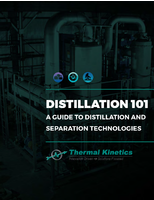Machining Software offers automatic feature recognition.
Share:
Press Release Summary:

FeatureCAM 2007 enables users to create or edit roughing and finishing toolpaths independent of part features, as well as specify custom hole dimensions, key geometric features, special-purpose tools, and exact machining parameters. Machining strategies in FeatureMILL3D maximize calculation speeds for 3D toolpaths and optimize surface finish that can be achieved. With Race Line Machining strategy, roughing passes are progressively smoothed out as toolpaths move further from main form.
Original Press Release:
Delcam USA Launches FeatureCAM 2007
Delcam USA has released FeatureCAM 2007, the latest version of the company's industry-leading feature-based machining software. This include major enhancements to the software's automatic feature recognition functionality and to FeatureMILL's range of 3D machining strategies.
In addition, FeatureCAM 2007 makes the creation and editing of toolpaths quicker, easier and more flexible. Instead of requiring the user to develop or change the feature properties and then generate or re-generate the toolpaths, FeatureCAM users can now create or edit roughing and finishing toolpaths independent of part features.
Complex hole recognition
The extended functionality in FeatureCAM's automatic feature recognition technology will recognise and machine automatically complex holes for special applications. Supplementing the wide selection of standard hole configurations already recognised by FeatureCAM, the upgraded software will enable users to specify custom hole dimensions, key geometric features, special-purpose tools and exact machining parameters. As a result, hydraulic connections, SAE ports, mould base fittings and other special holes will be automatically recognised and machined to desired specifications.
Hole recognition is linked to cylinders defined by hole diameters and depths; providing a range of dimensions permits recognition of a variety of holes within the parameters listed. Recognition can also be linked to data directly imported from selected CAD programs. Users can either define their own machining parameters or use those native to FeatureCAM.
Automated machining strategies
The new advanced machining strategies in FeatureMILL3D are based on proven Delcam technology. These additions have enabled significant increases in calculation speeds for 3D toolpaths and improved the surface finish that can be achieved.
The main requirements for advanced machining are to keep the load on the cutter as consistent as possible, and so maximise its life by reducing wear, and to minimise any sudden changes in the cutting direction that will either put excessive load on the tool or require a slowing in the feed rate. The new FeatureMILL3D strategies enable users to meet both these objectives.
For example, with both rough and finish machining strategies, arcing moves can be used when approaching and leaving the job. Similarly, arcs can be used to link the various cutting moves. This is more efficient than the traditional approach of using right-angle moves that can require the cutting speed to be reduced and also leave dwell marks. In addition, arcs can be inserted automatically into roughing toolpaths as the tool approaches any steep face. This gives smoother toolpaths that can be run at higher speed with less wear.
The new release of FeatureMILL3D will also offer Delcam's patented Race Line Machining strategy. With this option, the roughing passes are progressively smoothed out as the toolpaths move further from the main form. The resulting paths minimise any sudden changes in direction and so allow faster machining, with less wear on the cutter and lower stress on the machine tool. For even more efficient metal removal, Race Line Machining can be combined with trochoidal machining. This strategy avoids full-width cuts by generating toolpaths that progressively shave material from the block in a circular motion.
New finishing options include a combination strategy in which 3D offset finishing is used on flatter areas and Z-level finishing used on steeper areas. The 3D offset toolpaths can be calculated with the surface stepover varying so that a constant cusp height is applied over the part. This approach will reduce the amount of hand finishing needed.
Another new strategy uses a spiral path instead of the conventional approach of machining down the job level by level. This keeps the cutter in constant contact with the job and so eliminates air moves. The smoother toolpaths also minimise any dwell marks as well as protecting the cutter and machine tool.
FeatureMILL3D will also incorporate new rest finishing options to ensure the highest possible quality of surface finish and to minimise hand finishing. These will include pencil machining, in which the material remaining is removed in a single pass, and Z-level rest finishing, the preferred option for clearing material left on steep surfaces.
For more information about FeatureCAM or for a free evaluation copy, visit www.featurecam.com.




